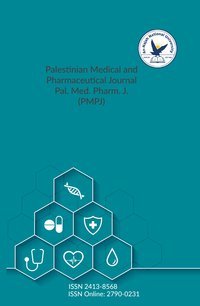An Overview of Nanocapsule and Lipid Nanocapsule: Recent Developments and Future Prospects
Article info
2022-06-08
2022-11-20
221 - 238
Keywords
- Encapsulation
- Emulsion
- Nanocapsule
- Drug delivery system
- Capsule
- Nanotechnology
Abstract
Nanocapsules are colloidal particles with dimensions measured in nanometers and gener-ally obtained in the range of 100 to 500 nm through nanoencapsulation technologies. Nano-encapsulation encapsulates nano-sized particles in liquid or solid form to create nanocapsules or nanoparticles. Generally, six classical methods are involved in nanocapsule formation: na-noprecipitation, emulsification-diffusion, double emulsification, emulsification-coacervation, polymer coating, and layer-by-layer. Nanocapsules are prepared from different monomers and cross-linked polymers, contributing to their stability during and after encapsulation. They are segregated into ionic and non-ionic by the surface formal charges, which then influence the type of applications. The applications of nanocapsules usually range from developing targeted drug delivery systems, self-healing materials, and the encapsulation of nutritive addi-tive compounds in nutraceutical products. Nowadays, people turn their attention to natural resources. Therefore, the polymer matrix and the active substances in nanocapsules have been adopted with various natural polymers such as protein, lipids, polysaccharides, plant metabolites, plant exudates, or plant extracts. Since nanotechnology products are predicted to be broadly utilized in the future, major key players must work collectively to handle the issue of safety regulation and user acceptance as well as optimum scale production of nanocap-sules in industries.
An Overview of Nanocapsule and Lipid Nanocapsule: Recent Developments and Future Prospects
المؤلفون:
معلومات المقال
2022-06-08
2022-11-20
221 - 238
الكلمات الإفتتاحية
- Encapsulation
- Emulsion
- Nanocapsule
- Drug delivery system
- Capsule
- Nanotechnology
الملخص
Nanocapsules are colloidal particles with dimensions measured in nanometers and gener-ally obtained in the range of 100 to 500 nm through nanoencapsulation technologies. Nano-encapsulation encapsulates nano-sized particles in liquid or solid form to create nanocapsules or nanoparticles. Generally, six classical methods are involved in nanocapsule formation: na-noprecipitation, emulsification-diffusion, double emulsification, emulsification-coacervation, polymer coating, and layer-by-layer. Nanocapsules are prepared from different monomers and cross-linked polymers, contributing to their stability during and after encapsulation. They are segregated into ionic and non-ionic by the surface formal charges, which then influence the type of applications. The applications of nanocapsules usually range from developing targeted drug delivery systems, self-healing materials, and the encapsulation of nutritive addi-tive compounds in nutraceutical products. Nowadays, people turn their attention to natural resources. Therefore, the polymer matrix and the active substances in nanocapsules have been adopted with various natural polymers such as protein, lipids, polysaccharides, plant metabolites, plant exudates, or plant extracts. Since nanotechnology products are predicted to be broadly utilized in the future, major key players must work collectively to handle the issue of safety regulation and user acceptance as well as optimum scale production of nanocap-sules in industries.
An-Najah National University
Nablus, Palestine
Nablus, Palestine
- P.O. Box
- 7, 707
- Fax
- (970)(9)2345982
- Tel.
- (970)(9)2345560
- (970)(9)2345113/5/6/7-Ext. 2628
- [email protected]
- EIC
- Prof. Ismail Warad
